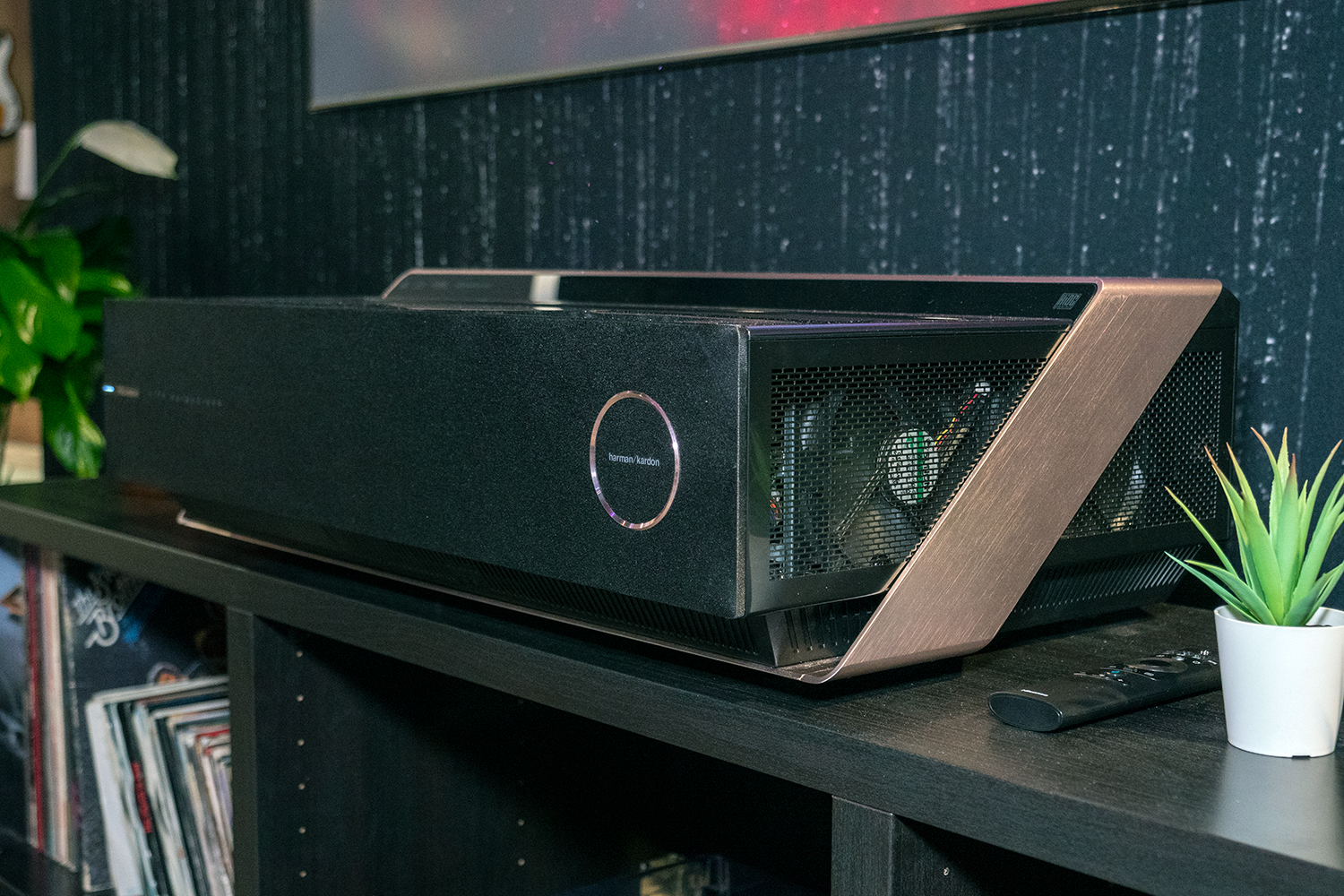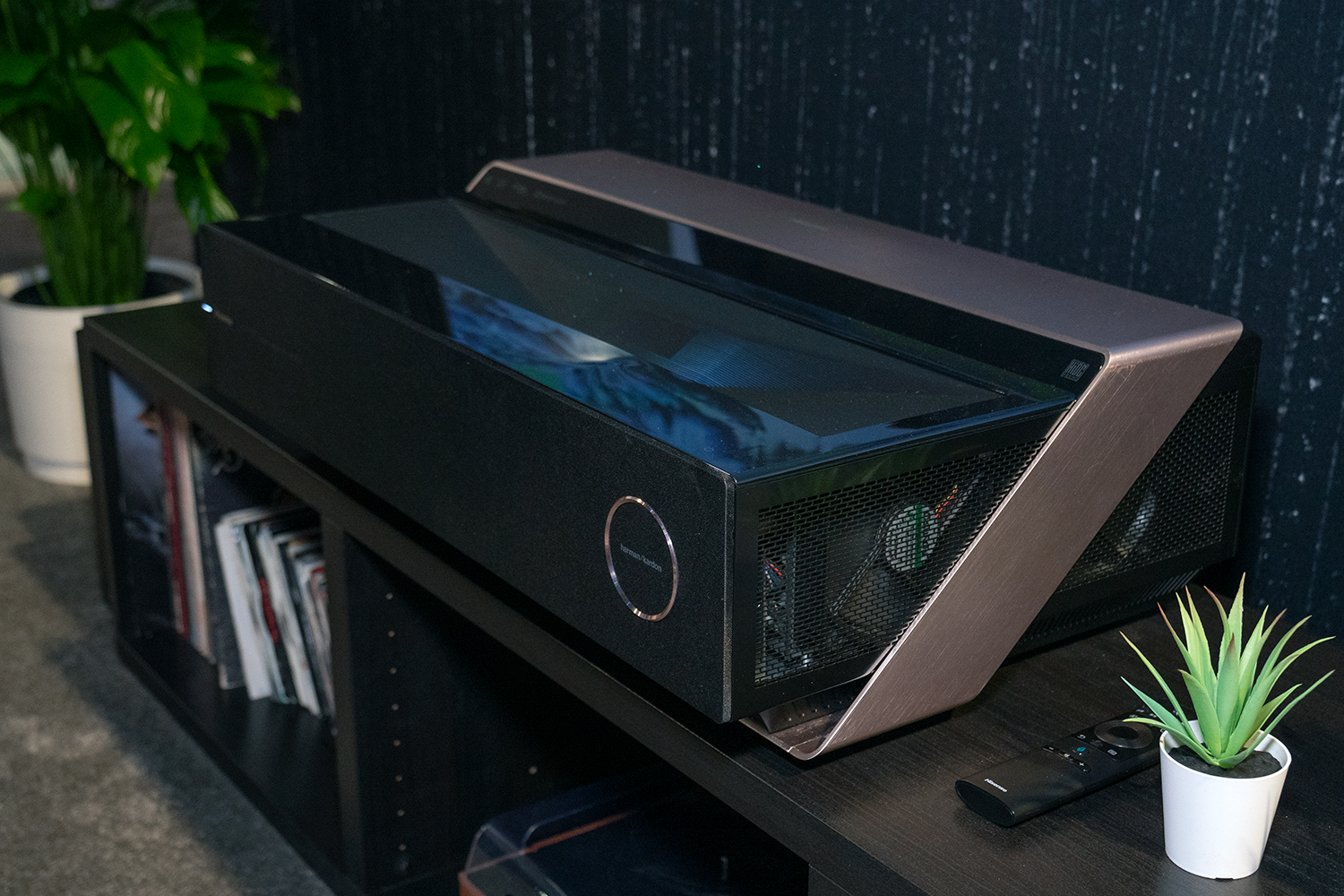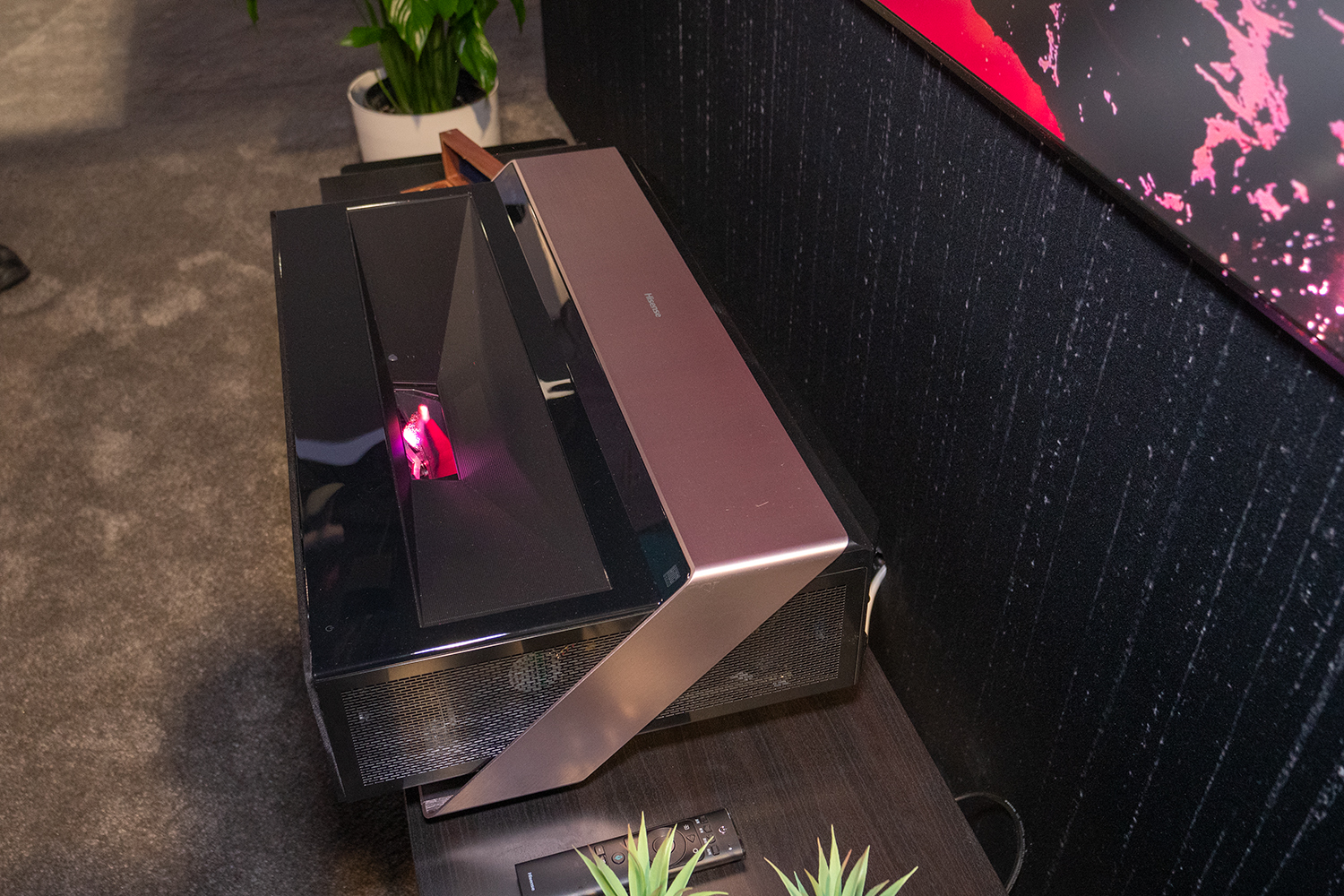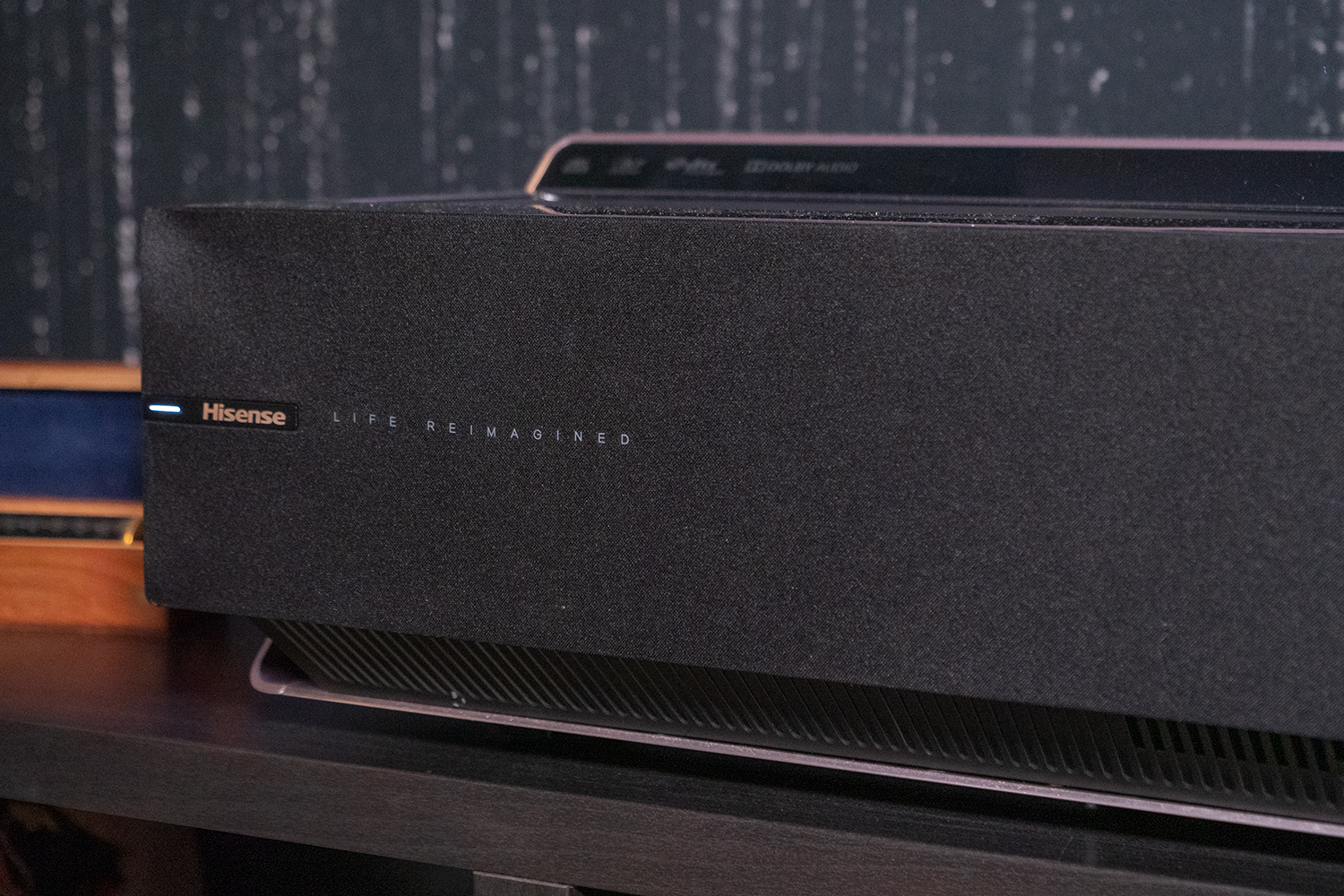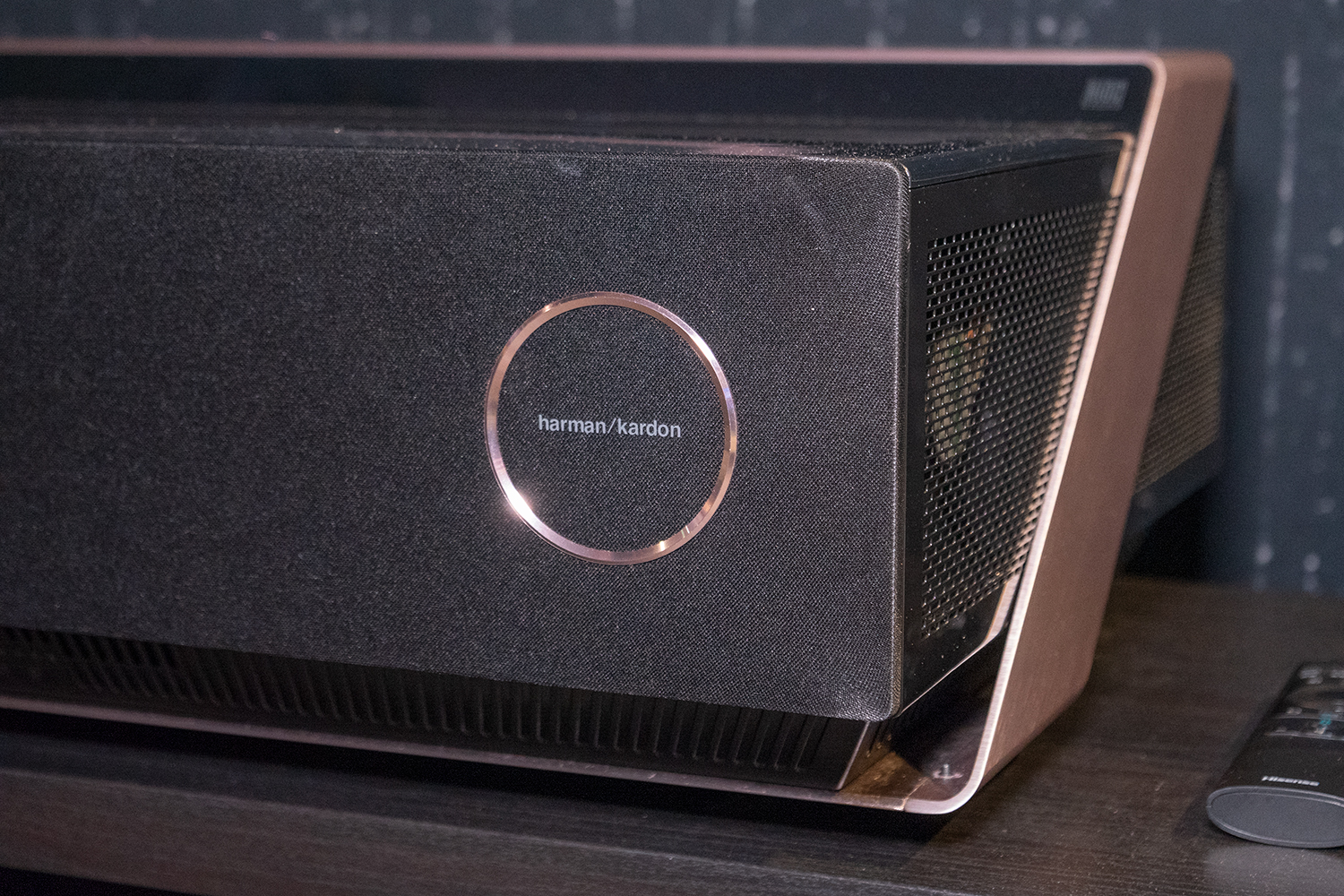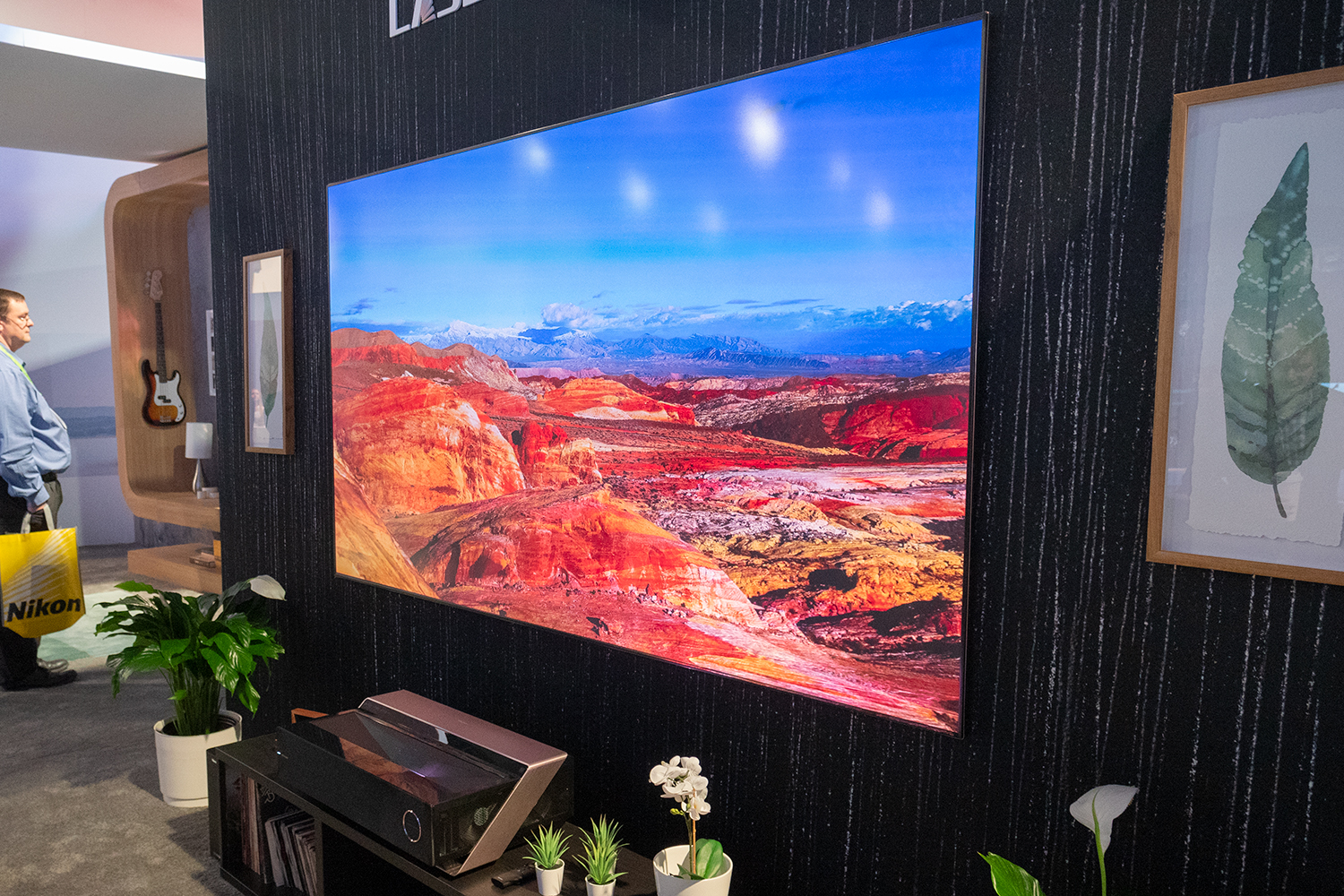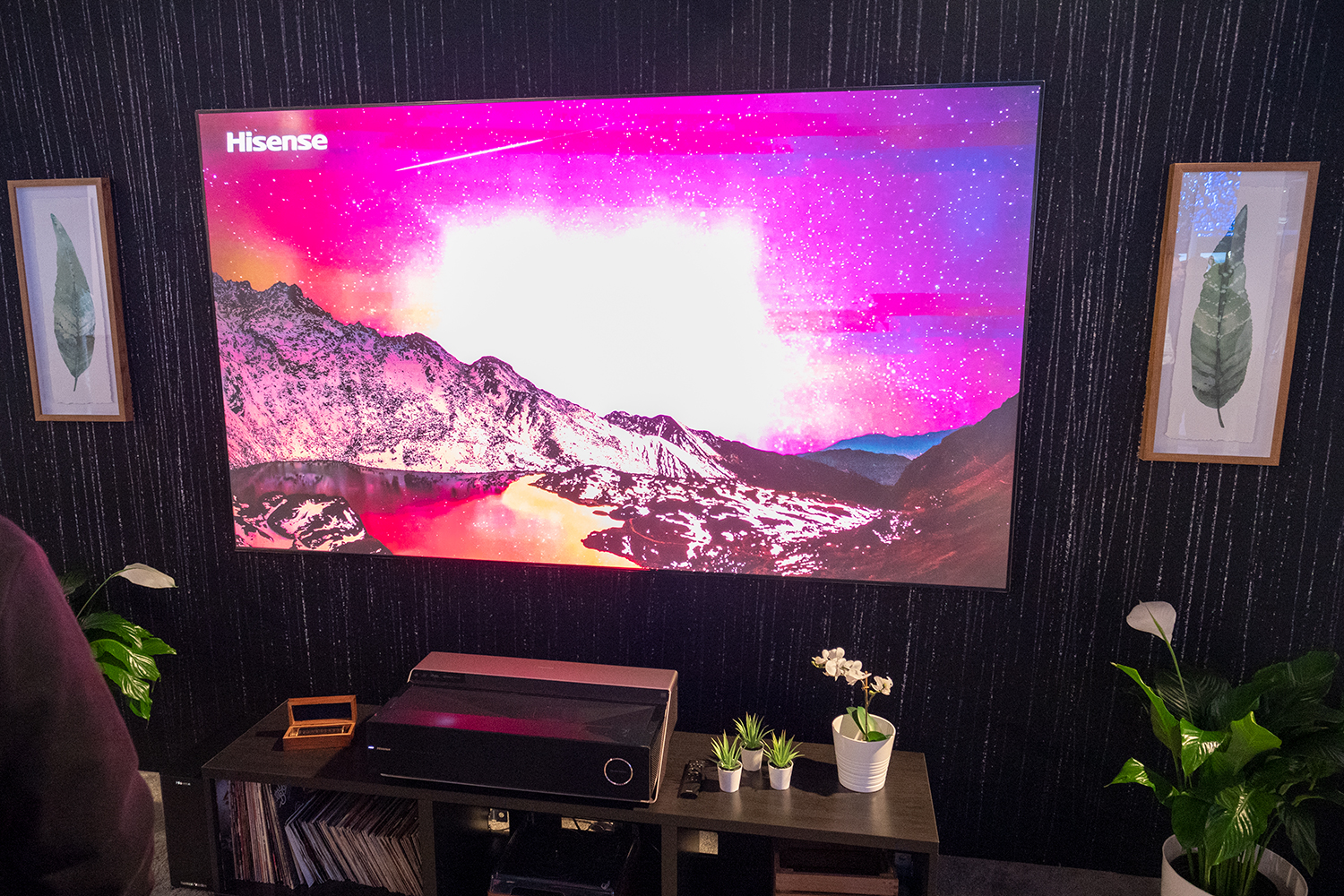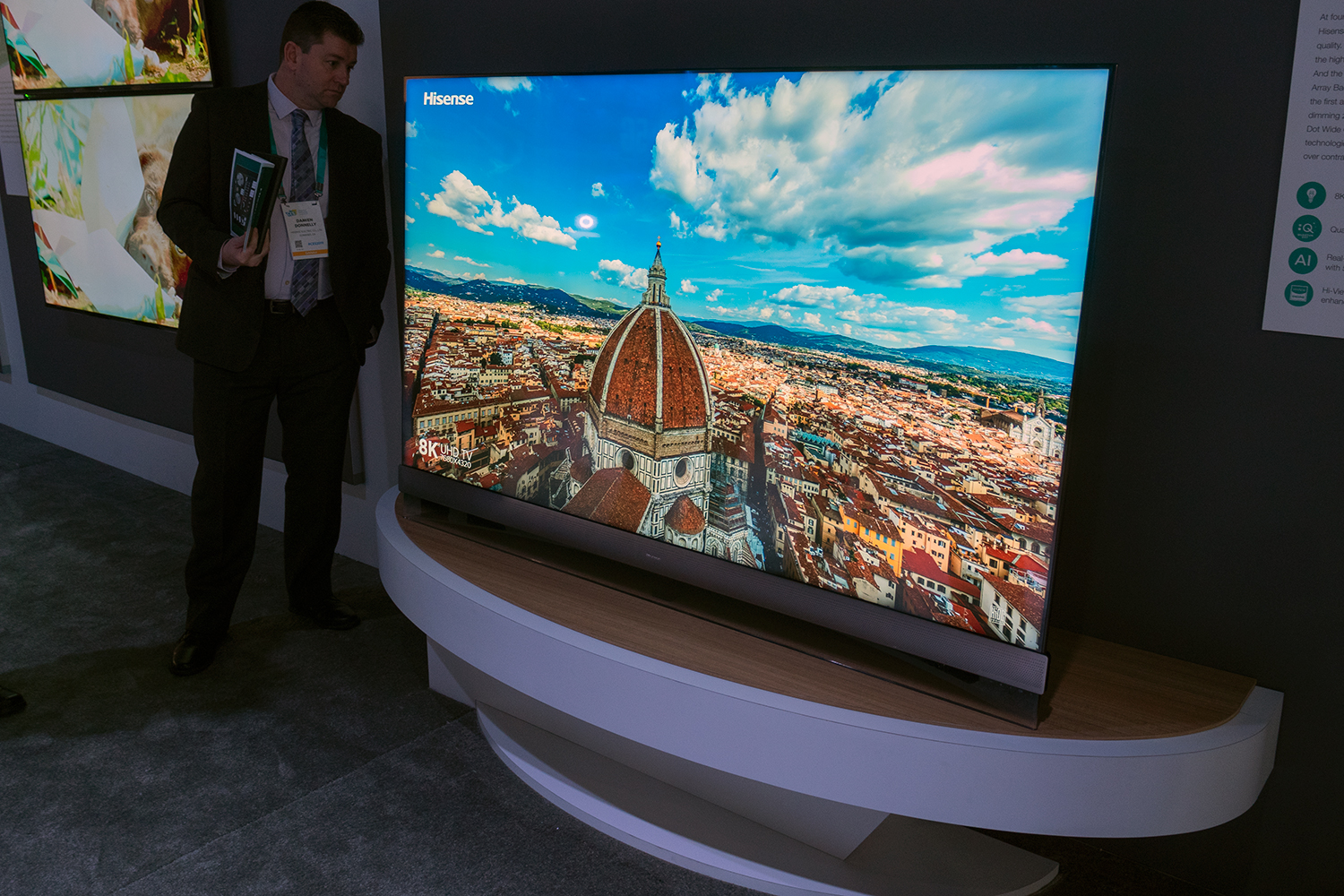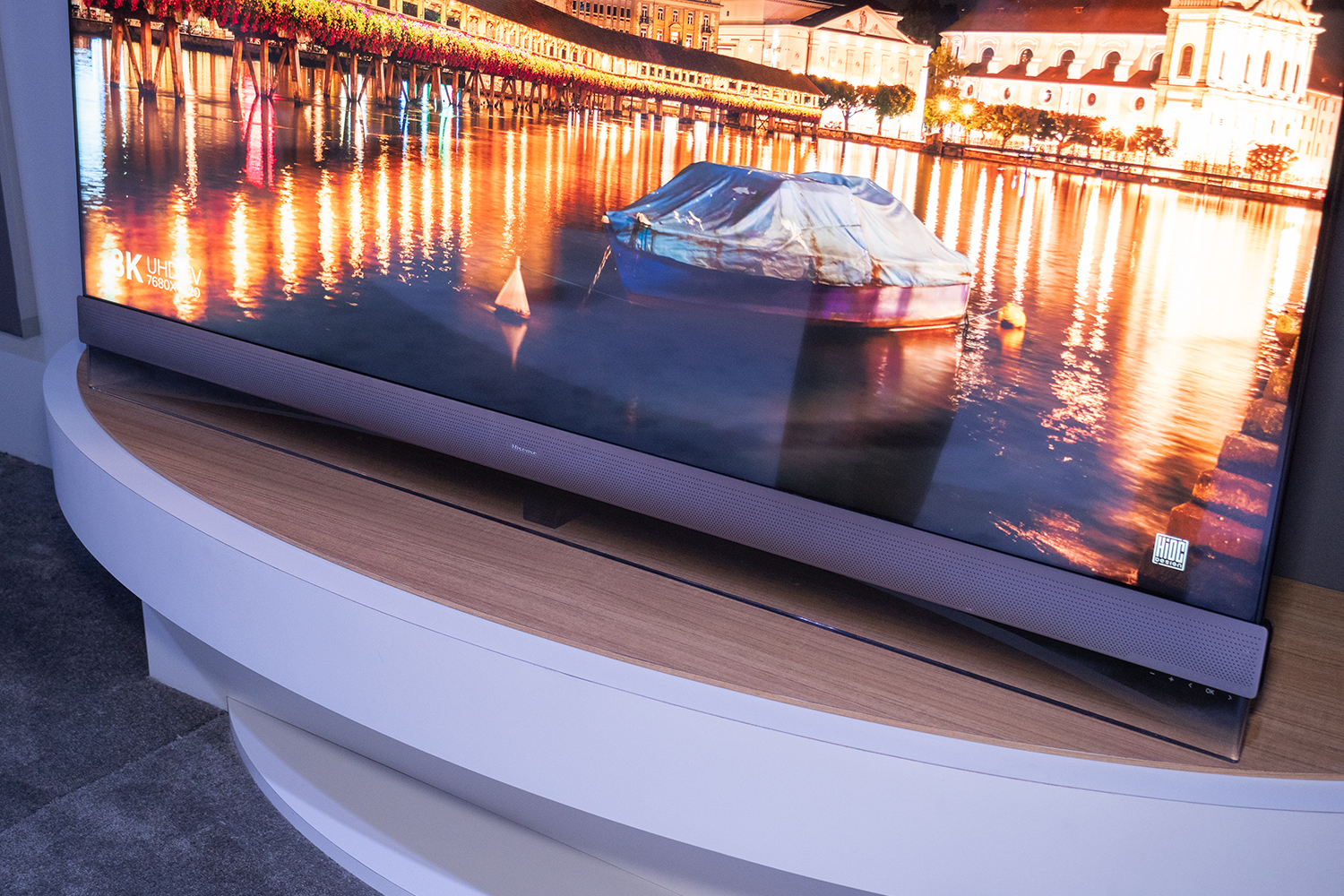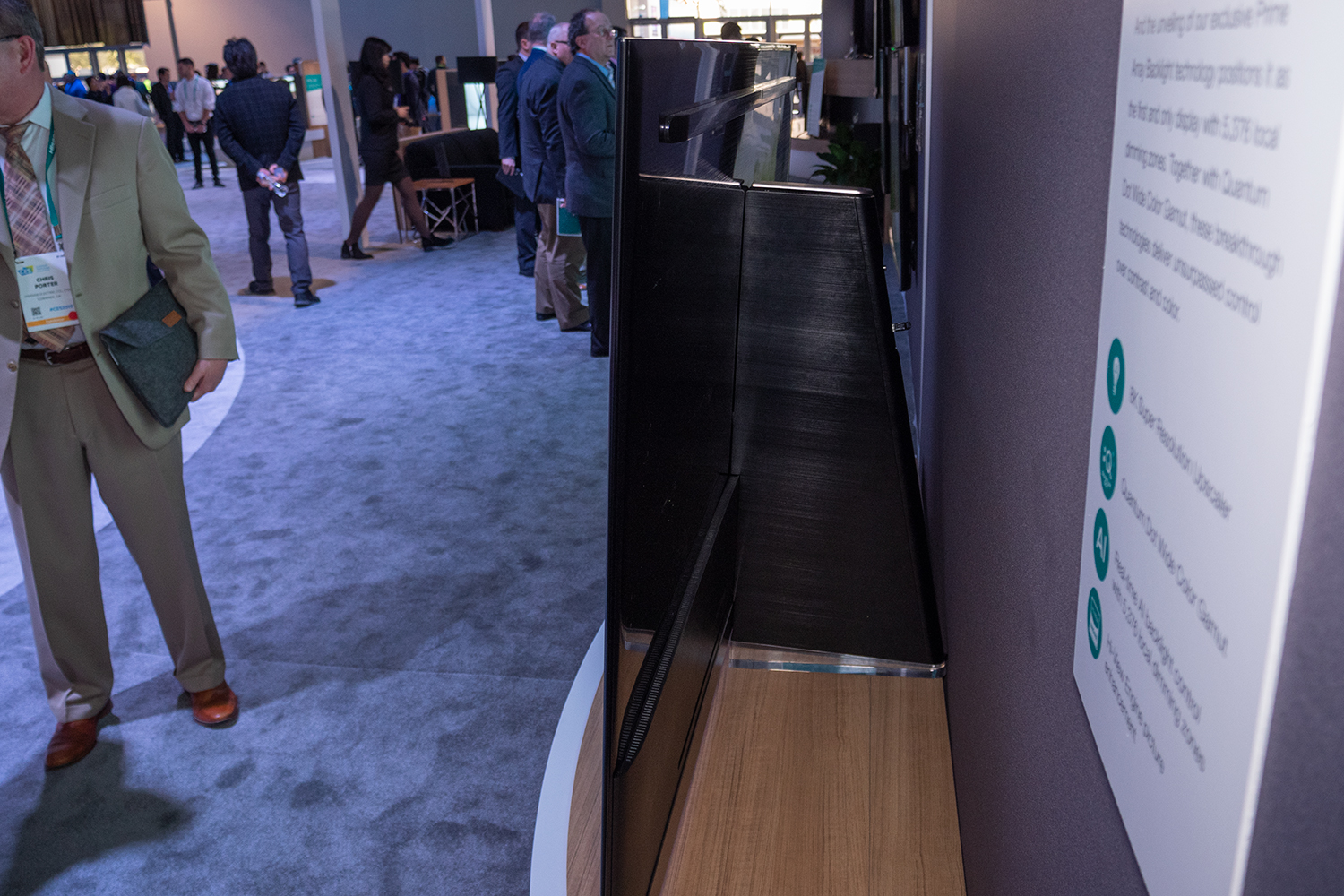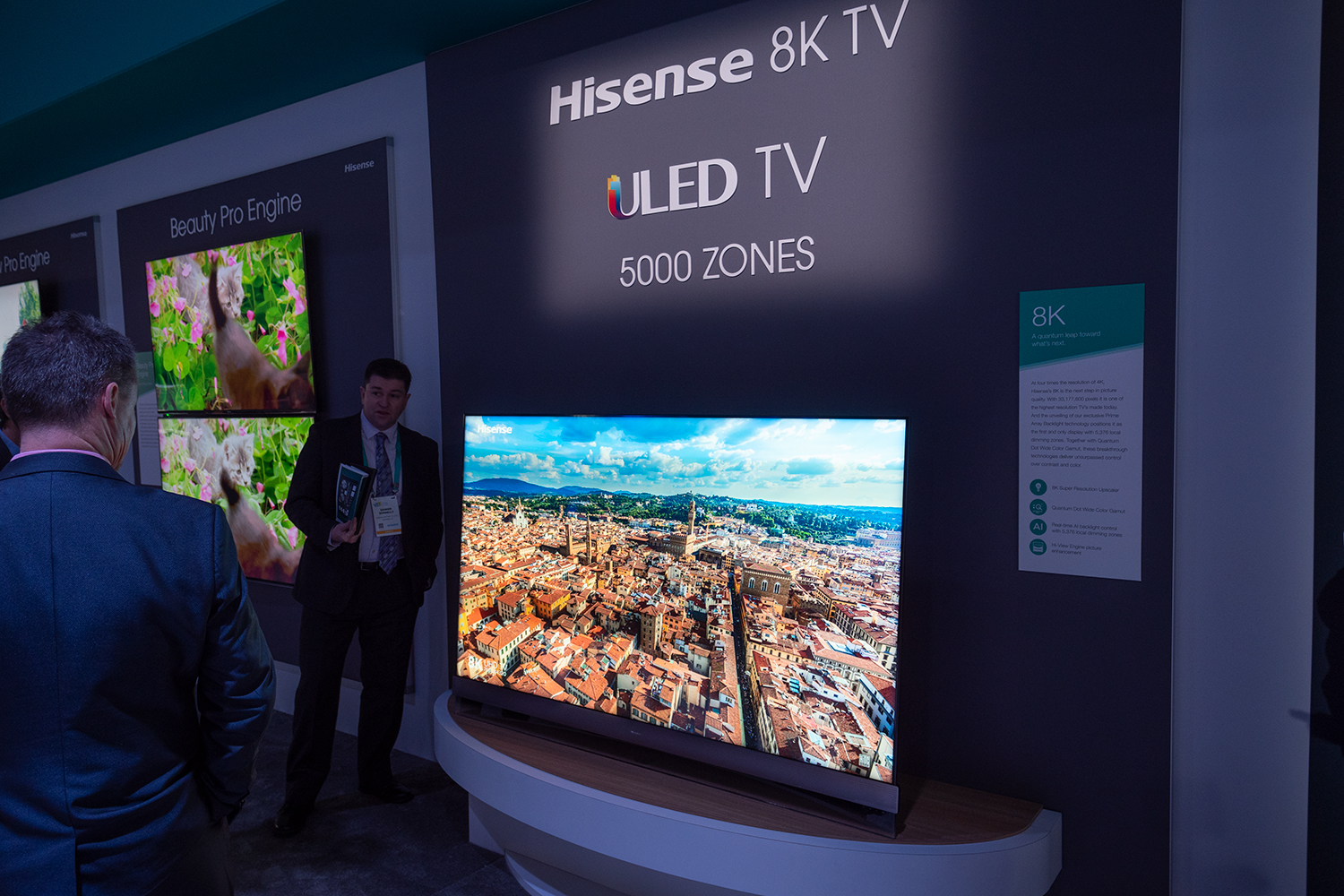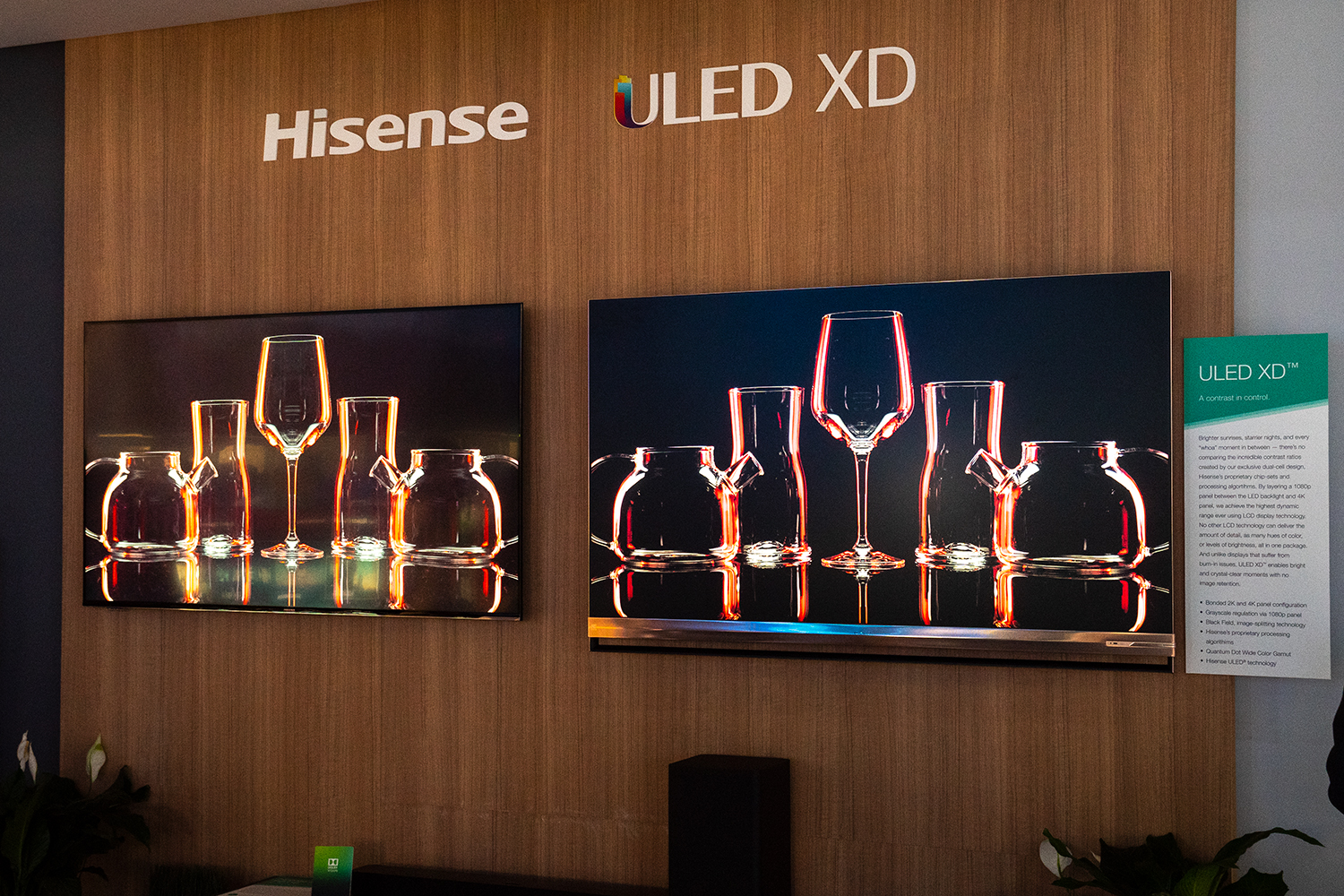There’s a tendency to expect that budget electronics companies will rely on trickle-down technologies to power their products. After all, how can you keep your prices lower than the competition if you’re investing millions in research and development? And yet, sometimes this isn’t the case at all. Take Hisense: The Chinese company is the No. 3 producer of TVs worldwide, largely due to its low prices. However, it’s also showing off some of the most intriguing new technologies this year at CES.
The company’s line of laser TVs — which are essentially powerful, short-throw projectors — have been wowing us for a few years, and prices are finally coming down to mere mortal levels. This year, Hisense is improving the performance of these TVs by tripling down on the lasers. Now, instead of a blue and red laser beam being used to create a visible spectrum, Hisense’s 4K Smart TriChroma Laser TV 100L7T, uses three lasers: One for red, green, and blue, and combines them when needed for pure white, a formula which the company claims can deliver 100 percent of DCI-P3 color space.
Hisense is also noteworthy for its line of ULED, or ultra LED, backlit TVs that the company has long positioned as an high brightness and high-contrast alternative to emissive OLED panels. Starting this year, its new ULED XD technology takes this a step further, by apparently fusing two displays panels into one. “Dual-cell ULED XD panel layers a 1080p module displaying a grayscale image between a full array LED backlight and a 4K module displaying a full color image, creating significant upgrades in local dimming, colors and dynamic range,” according to the company’s press release. Though it seems counter-intuitive that putting anything between a backlight and a color panel would improve colors and dynamic range, it’s a clever and unique approach.
In the never-ending quest for an ever-thinner TV, OLED has been the unquestioned reigning champ. But to achieve its millimeter-thin depth, OLED panels need to house their electronics in a separate unit (like LG’s W-series), or consign them to a thicker portion of the TV. Hisense’s new Sonic One is a traditional LED TV that manages to achieve a maximum 1.1-inch thickness, by turning the panel itself into a speaker. We’ve seen this before on Sony’s OLED TVs and on LG’s latest OLED model, but not on other display technologies.
Hisense also debuted updates to it regular line of TVs:
- The Hisense U9, is a Quantum Dot TV with 2,200 nits of brightness, and more than 1,000 local dimming zones. The bezel-less design is Dolby Vision HDR-compatible and uses a series of artificial intelligence-based picture quality algorithms, to improve color, contrast, motion, and brightness.
- The Hisense Q9, a 4K ULED TV with more than 1,000 nits of brightness, Quantum Dot and wide color gamut. It has Android TV onboard, with full access to the Google Play store for apps, games, movies, and TV shows. It also features dbx-tv sound.
- The Hisense Roku TV 4K UHD R8 is the first Roku TV with a ULED backlight, which incorporates full array local dimming, wide colour gamut and 700 nits of brightness. Dolby Vision HDR and Dolby Atmos round out this TV’s feature set.
No pricing or availability details for any of these new models as yet, but we expect to hear more about this in the coming weeks.
